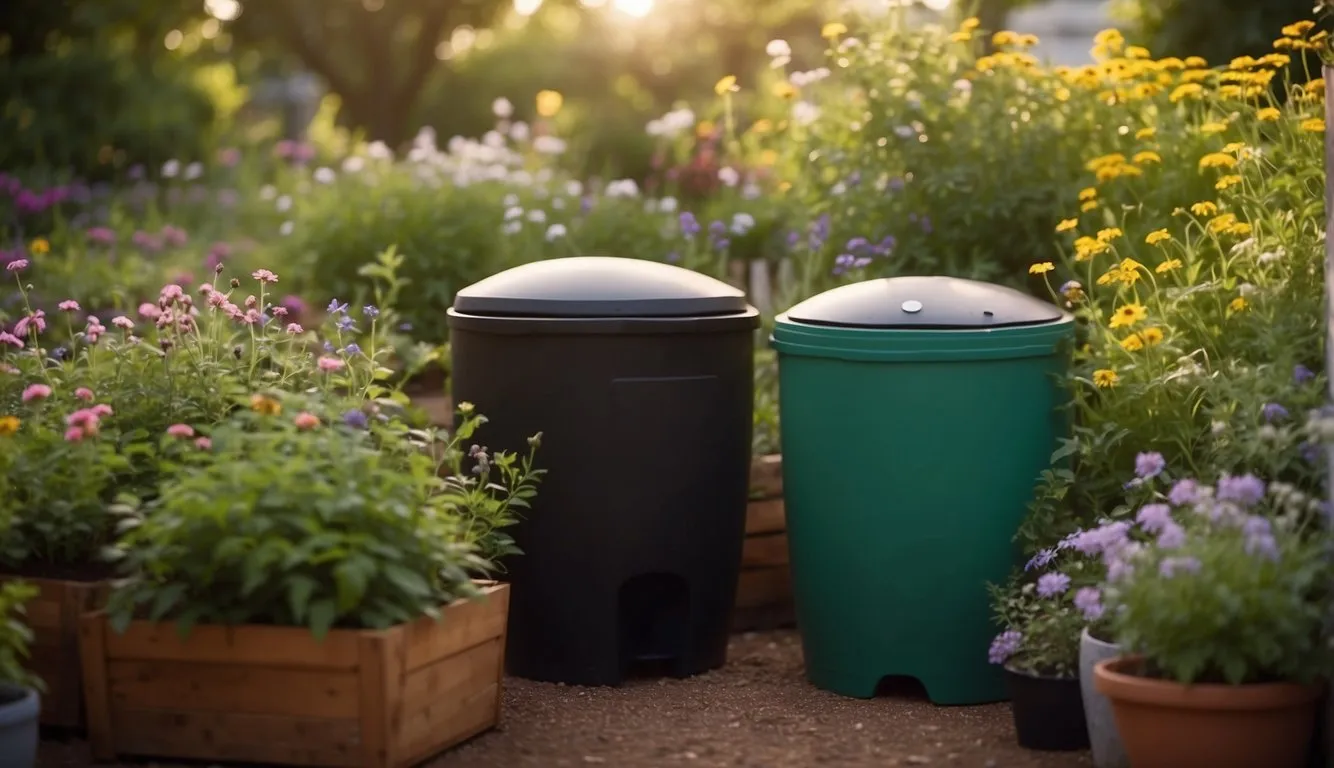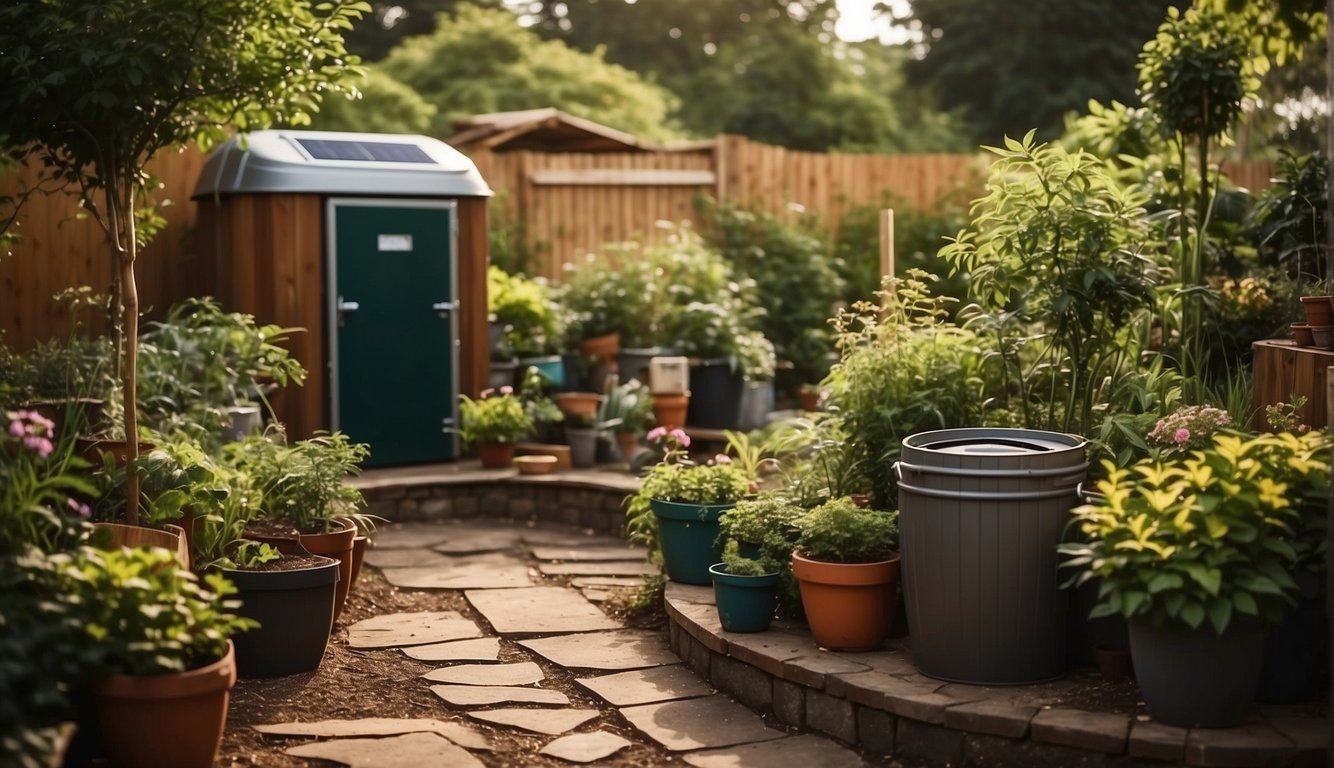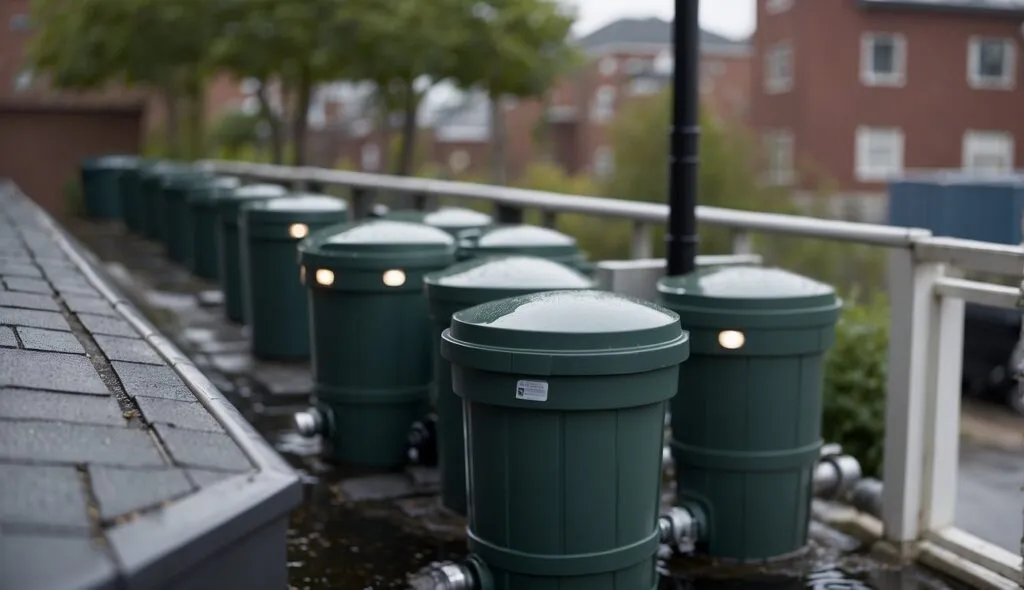As environmentally conscious gardeners, we all want to do our part in creating a sustainable garden that benefits both our environment and our health. By incorporating eco-friendly garden hacks, we can reduce our carbon footprint and create a thriving garden that is both beautiful and functional. In this article, we will explore ways to create an eco-friendly garden that is both sustainable and easy to maintain.

Before starting your garden, it’s important to plan ahead to ensure that you are creating a sustainable and eco-friendly space. Consider the layout of your garden and how you can incorporate sustainable practices such as composting, rainwater harvesting, and companion planting. By doing so, you can create a garden that is both beautiful and sustainable.
Creating healthy soil is essential for a thriving garden. Instead of using chemical fertilizers, consider composting to create nutrient-rich soil. Composting is a simple and effective way to reduce waste and create a sustainable garden. By incorporating compost into your soil, you can improve soil structure, increase soil fertility, and reduce the need for chemical fertilizers. Additionally, composting can help reduce greenhouse gas emissions by diverting organic waste from landfills.
Table of Contents
Key Takeaways
- Planning ahead is key to creating an eco-friendly garden
- Composting is an effective way to create nutrient-rich soil and reduce waste
- Water conservation and plant selection are important factors in creating a sustainable garden
Planning Your Garden
When planning an eco-friendly garden, there are several factors to consider. We want to create a beautiful and functional space that is also sustainable and low maintenance. Here are some tips for planning your garden:
Choose Native Plants and Companion Planting
One of the best ways to create an eco-friendly garden is by choosing native plants. Native plants are adapted to the local climate and require less water and maintenance than non-native plants. They also provide habitat for local wildlife and help to preserve biodiversity.
In addition to native plants, consider incorporating companion planting into your garden design. Companion planting is the practice of planting different species of plants together to benefit each other. For example, planting sunflowers with tomatoes can help to repel pests and attract pollinators.
Xeriscaping and Drought-Tolerant Plants
Xeriscaping is a landscaping technique that involves using drought-tolerant plants and minimizing water use. This is especially important in areas with limited water resources. Consider using succulents and other drought-tolerant plants in your garden design.
Garden Design and Maintenance
When designing your garden, consider the layout and placement of plants. Group plants with similar water and sun requirements together to make watering and maintenance easier.
In addition, consider using organic methods for pest control and fertilization. This will help to reduce the use of harmful chemicals and promote a healthy ecosystem in your garden.
By following these tips, we can create a beautiful and sustainable garden that benefits both us and the environment.
Soil and Composting
Composting Techniques
Composting is an excellent way to reduce waste, save money, and improve soil health. We can compost a variety of materials, including kitchen scraps, grass clippings, and coffee grounds. Composting requires a balance of nitrogen-rich and carbon-rich materials. Nitrogen-rich materials include green plant material, such as grass clippings and kitchen scraps. Carbon-rich materials include brown plant material, such as leaves and twigs. We can also add other materials to our compost pile, such as coir and peat-free compost.
To start composting, we can either create a pile or use a compost bin. A pile is a simple and low-cost option, but it requires more maintenance. A compost bin is a more controlled environment that requires less maintenance. We can purchase a compost bin or create our own using materials such as wood pallets or chicken wire.
To maintain our compost pile, we need to keep it moist and aerated. We can add water to our compost pile to keep it moist, and we can turn it over with a pitchfork to aerate it. We can also add worms to our compost pile to speed up the decomposition process.
Soil Health and Amendments
Soil health is essential for growing healthy plants. We can improve soil health by adding compost and other organic amendments to our soil. Compost is an excellent source of nutrients for plants, and it also improves soil structure and water retention. We can add compost to our soil by spreading it on top of our soil or by mixing it into our soil.
Other organic amendments we can add to our soil include manure, bone meal, and blood meal. Manure is a good source of nitrogen, phosphorus, and potassium. Bone meal is a good source of phosphorus, and blood meal is a good source of nitrogen. We can also add lime to our soil to raise the pH level or sulfur to lower the pH level.
In conclusion, composting and soil amendments are essential for a healthy and eco-friendly garden. By composting our kitchen scraps and yard waste, we can reduce waste and improve soil health. By adding compost and other organic amendments to our soil, we can provide our plants with the nutrients they need to thrive.
Water Conservation
As gardeners, we know the importance of water conservation in our gardens. By using efficient watering systems, we can reduce our water usage and save money on our water bills. Here are two eco-friendly watering techniques that can help us conserve water.
Efficient Watering Systems
One of the most effective ways to conserve water in our gardens is by using an efficient watering system. Drip irrigation systems and soaker hoses are two great options for efficient watering. These systems deliver water directly to the roots of our plants, reducing water waste from evaporation and runoff.
Drip irrigation systems use a network of tubes and emitters to deliver water to our plants. They can be set up to water specific areas or individual plants. Soaker hoses, on the other hand, are porous hoses that release water slowly and evenly along their length. Both systems are easy to install and can be set up on a timer to ensure that our plants get the right amount of water at the right time.
Rainwater Harvesting
Another great way to conserve water in our gardens is by harvesting rainwater. Installing a rain barrel or water butt can help us collect rainwater from our roofs, which we can then use to water our plants. Rainwater is free and contains nutrients that are beneficial to our plants.
To set up a rain barrel, we simply need to place it under a downspout and attach a hose to the spigot. We can then use the hose to water our plants. It’s important to keep the rain barrel covered to prevent mosquitoes from breeding in the standing water.
In conclusion, by using efficient watering systems and harvesting rainwater, we can conserve water in our gardens and reduce our water bills. These techniques are easy to implement and can make a big difference in our water usage. By taking these small steps, we can contribute to a more sustainable future.
Plant Selection and Care
When it comes to eco-friendly gardening, plant selection and care are essential. Choosing the right plants for your garden can make a significant difference in attracting beneficial wildlife, managing pests and diseases, and conserving water. Here are some tips to help you create a vibrant and sustainable garden:
Attracting Beneficial Wildlife
Attracting beneficial wildlife to your garden is an excellent way to control pests and promote pollination. Birds, bees, butterflies, and other pollinators play a crucial role in maintaining a healthy ecosystem. To attract these creatures, consider planting native species, such as lavender, marigolds, rosemary, and echinacea. These plants are adapted to the local climate and soil conditions, making them more resistant to pests and diseases.
Pest and Disease Management
Pest and disease management are essential for maintaining a healthy garden. However, using pesticides can harm beneficial insects and pollinators, as well as contaminate the soil and water. Instead, consider using natural pest control methods, such as companion planting, crop rotation, and handpicking. Companion planting involves growing certain plants together to repel pests or attract beneficial insects. For example, planting marigolds near tomatoes can help deter nematodes. Crop rotation involves planting different crops in different areas to prevent the buildup of pests and diseases. Handpicking involves physically removing pests from plants.
In conclusion, selecting the right plants and using natural pest control methods are essential for creating an eco-friendly garden. By attracting beneficial wildlife and managing pests and diseases, we can create a sustainable and vibrant garden that benefits both us and the environment.
Conclusion
In conclusion, we have explored various eco-friendly hacks that can help us cultivate a vibrant and sustainable garden. By embracing sustainable gardening practices, we can reduce our impact on the environment while still enjoying the beauty and benefits of a lush garden.
Organic gardening is a key component of sustainable gardening practices. By avoiding the use of harmful chemicals and pesticides, we can create a healthy and thriving ecosystem that supports a diverse range of flora and fauna. Composting is another eco-friendly practice that can help us enrich our soil and reduce waste.
Habitat conservation is also an important aspect of sustainable gardening. By creating a wildlife-friendly garden, we can provide a habitat for birds, pollinators, amphibians, and small mammals. This can help us foster a harmonious balance between our garden and the planet.
In summary, by incorporating these eco-friendly gardening hacks into our routine, we can create a beautiful and sustainable garden that benefits both us and the environment. Let’s continue to explore and implement new ways to reduce our impact on the planet and cultivate a greener future.
Frequently Asked Questions

What are the essential steps to begin an eco-conscious garden?
Starting an eco-conscious garden is easier than you might think. The first step is to assess the soil and determine which plants will thrive in your climate. It’s important to choose plants that are native to your area, as they are better adapted to local conditions and require less water and maintenance. Next, consider composting to create a natural fertilizer for your garden. Finally, make sure to use organic and natural pest control methods to avoid harmful chemicals that can damage the local ecosystem.
Which plants should be prioritized for a sustainable gardening practice?
When it comes to sustainable gardening, native plants are the way to go. These plants are adapted to local conditions and require less water and maintenance than non-native species. They also provide important habitat and food for local wildlife, which is essential for maintaining a healthy ecosystem. Some popular native plants include milkweed, coneflower, and butterfly weed.
How can I ensure my gardening methods support the local ecosystem?
One of the best ways to support the local ecosystem is to use natural and organic gardening methods. This includes avoiding harmful chemicals and pesticides that can damage the environment and harm local wildlife. It’s also important to choose plants that are native to your area and provide habitat and food for local wildlife. Finally, consider incorporating a composting system into your garden to create a natural fertilizer that supports healthy soil and plant growth.
What are effective water conservation techniques for environmentally friendly gardening?
Water conservation is a key aspect of environmentally friendly gardening. One effective technique is to use a drip irrigation system, which delivers water directly to the plant roots and reduces water waste. Another option is to collect rainwater in a barrel or other container and use it to water your garden. Finally, consider planting drought-tolerant plants that require less water and are better adapted to local conditions.
How can I create a composting system to benefit my garden naturally?
Composting is a great way to create a natural fertilizer for your garden. To get started, choose a compost bin or create a compost pile in a sunny location. Add a mix of brown and green materials, such as leaves, grass clippings, and vegetable scraps. Make sure to turn the compost regularly to aerate it and speed up the decomposition process. Once the compost is ready, spread it around your garden to provide essential nutrients for your plants.
What are the best practices for pest control in an eco-friendly garden?
When it comes to pest control in an eco-friendly garden, prevention is key. This includes choosing plants that are resistant to pests and diseases, as well as using natural and organic pest control methods, such as companion planting, crop rotation, and handpicking. It’s also important to maintain healthy soil and avoid over-fertilizing, as this can attract pests and diseases. By following these practices, you can keep your garden healthy and thriving without harming the local ecosystem.


